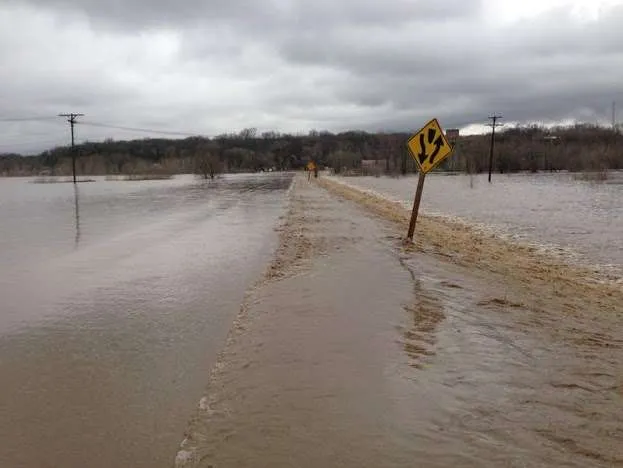KSU/MU publication provides information consumers should consider after a flood has affected their homes or businesses
OLATHE, Kan. – Whether it’s a basement in one’s home or a whole neighborhood under water, floods can be devastating in so many ways. They damage property and can leave lasting effects on communities. With cleaning up and reorganizing among the first priorities, consumers may not think about the consequences floodwater can have on foods.
Floodwater often contains sewage or animal waste, which means harmful organisms could contaminate foods affected by floods. Organisms in floodwater might include foodborne pathogens such as E. coli and Salmonella, which could cause foodborne illness, said Londa Nwadike, food safety specialist for the University of Missouri Extension and Kansas State Research and Extension.
“Flood waters could also contain petroleum products such as gasoline and oil, which can cause naseua, vomiting, and other short- and long-term effects if consumed in large quantities,” Nwadike said.
A publication from K-State and the University of Missouri, titled “Food Safety After a Flood,” provides helpful tips to aide in the cleanup process. Nwadike authored the publication and said her best advice is: “When in doubt, throw it out.”
The only food that can be kept after exposure to floodwater is commercially prepared foods in metal cans and retort pouches, assuming they are not damaged, she said. Retort pouches may be used to package items such as shelf stable juices.
“All other foods exposed to flood water should be thrown away,” Nwadike said.
This includes foods in the refrigerator and freezer, as well as all foods in boxes, paper, foil or cloth. Also dispose of spices, seasonings and extracts. Consumers should throw away any home canned foods exposed to flood water, as it is difficult to properly disinfect the seals.
Other flooded foods stored in open containers, packages or canisters should be tossed out, as should foods with caps and pull-tabs, such as condiments and soft drinks.
The fact sheet includes information on how to properly sanitize undamaged cans, retort packages, cooking utensils, pots and pans, and kitchen countertops that have been exposed to flood water.
For these and other tips regarding food safety after a flood, visit the K-State Research and Extension Food Safety and Disasters website or contact your local extension office.
FOR PRINT PUBLICATIONS: Links used in this article
Food Safety After a Flood https://bookstore.ksre.ksu.edu/pubs/MF3199.pdf
Food Safety and Disasters web page https://www.ksre.k-state.edu/foodsafety/topics/disaster.html
K State Research and Extension is a short name for the Kansas State University Agricultural Experiment Station and Cooperative Extension Service, a program designed to generate and distribute useful knowledge for the well being of Kansans. Supported by county, state, federal and private funds, the program has county extension offices, experiment fields, area extension offices and regional research centers statewide. Its headquarters is on the K State campus in Manhattan. For more information, visit www.ksre.ksu.edu. K-State Research and Extension is an equal opportunity provider and employer.
For more information:
Londa Nwadike
lnwadike@ksu.edu or 913-307-7391





